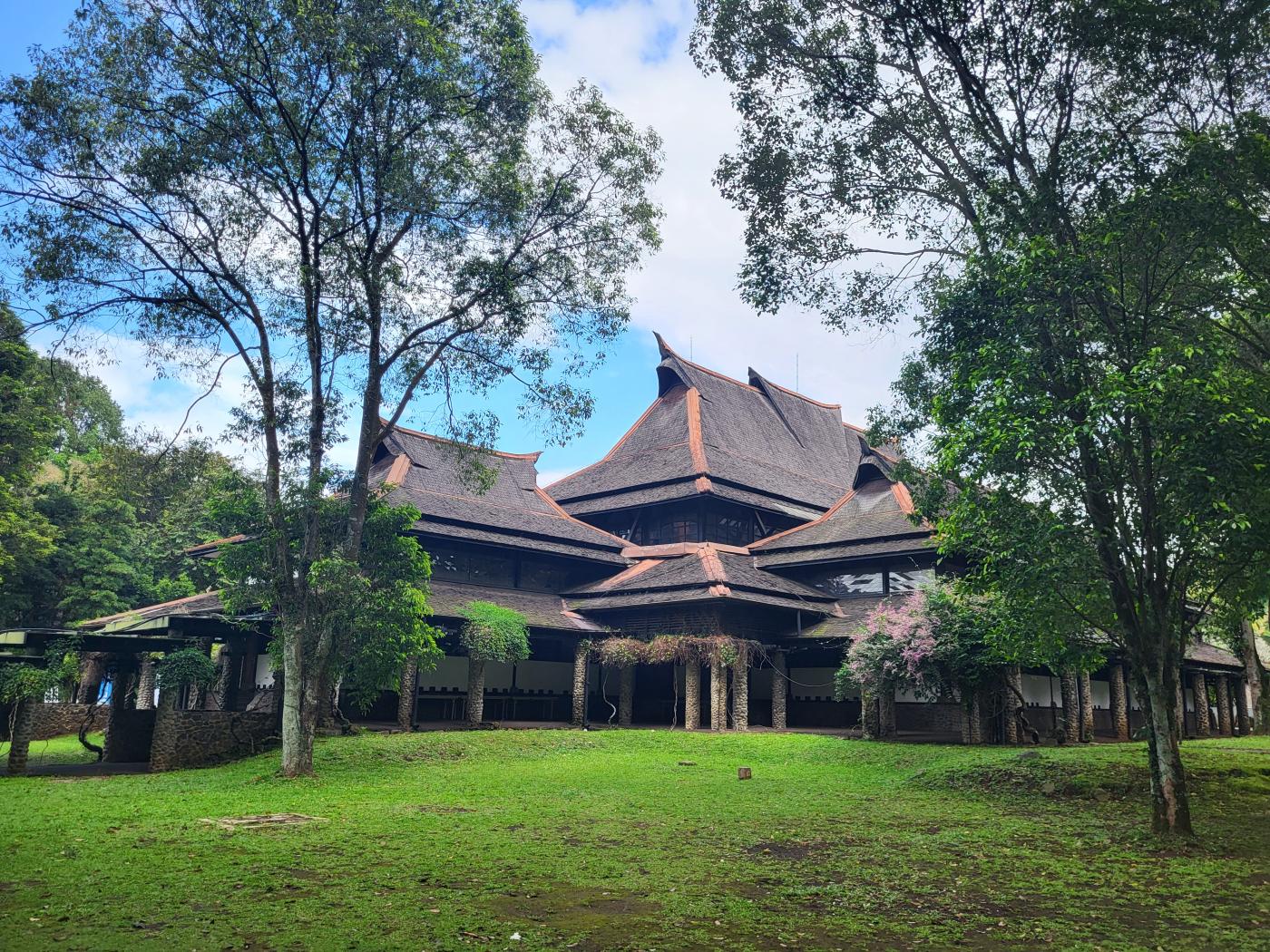
Mellon Fellow Rina Priyani Joins SAH 2025 Method Acts Program

Rina Priyani, a Mellon Race, Place, and Equity Postdoctoral Research Fellow in the Department of Architectural History at UVA School of Architecture, has been selected for the Society of Architectural Historians (SAH) 2025 Method Acts Program. This annual forum, organized by the SAH Graduate Student Advisory Committee, provides SAH members an opportunity to showcase and discuss innovative research methodologies. As part of the series, Priyani was invited to present her paper “Builders, Brokers, and Women: Informal Works and Racialized Landscapes of Postcolonial Indonesia” in a virtual workshop to SAH members next month.
Priyani’s research examines the racialization of urban space in colonial and postcolonial Southeast Asia. Her book project, Building Bandung: Colonialism, Ethnic Identities and Architectural Practices in Indonesia, explores how Indonesian intellectuals and visionaries have reimagined the city of Bandung, moving beyond its colonial past. She traces Bandung’s transformation from Dutch colonial rule and Japanese occupation to Indonesia’s independence, emphasizing its role in the 1955 Bandung Conference, a key moment in the Non-Aligned Movement.
We asked Priyani to provide background about her research and a glimpse into what she'll discuss with other emerging scholars at the Method Acts workshop.
Your ongoing research focuses on Bandung’s urban transformation. What initially drew you to this topic, and how has your perspective evolved over time?
Most urban scholars of Indonesia and Southeast Asia have focused their work on Jakarta, the nation’s capital. Initially, I proposed a research topic on Jakarta’s urban heritage for my graduate school applications. However, I shifted my focus to Bandung, a medium-sized city southeast of Jakarta. This decision was partly inspired by a question posed by my mentor, the late Jeff Hadler, at Berkeley who asked: Do you want to have Sukarno designing your house, and why?
Sukarno, Indonesia’s first president and a prolific orator, was trained as an architectural engineer at Bandung’s Technical College during the Dutch colonial era in the early 20th century before entering politics. Understanding Sukarno’s grandiose manner, my answer was no, but Jeff’s question on “why,” drew me to the idea of power, colonialism, race, and struggles for freedom that I could potentially trace through the transformation of urban Bandung and its architectural productions.
Additionally, I have a personal connection to the city—I was born and raised in Bandung. Initially, I approached my research as an insider, but as I moved across different places, I began to view the city from an outsider’s perspective. Ironically, distance has strengthened my attachment to this topic.

For audiences unfamiliar with Bandung’s historical and cultural context, what foundational points do you emphasize when introducing your research?
I'm glad you asked the question. I often begin with a discussion of coffee and tea plantations, which played a foundational role in Bandung’s modern history. The Dutch East India Company (known as the VOC in Dutch: Vereenigde Oostindische Compagnie) introduced coffee cultivation to West Java in the 18th century, taking advantage of the region’s volcanic soil. This was one of the VOC’s most successful colonial experiments, but it came at the cost of systemic racism and the exploitation of local labor.
In the late 19th century, the Dutch colonizers were aware that they had a “moral obligation” to the local people and the land. This period was marked by the opening of private tea plantations followed by the design of a ‘garden city’ in the northside, including housing, schools, and the Technical College. The tea planters of the early 20th century were the beneficiaries of Bandung. The garden city and its expansion plan in the north displaced the old town in the southside. My research focused on the spatial transformation during three eras: the late Dutch colonial era (1870-1942), Japanese Occupation (1942-1945), and the early, Indonesian post-Independence (1950s-1960s).
The 1955 Bandung Conference is an important moment referenced in your current book project. Why was this event so historically significant, and how do you see its legacy influencing urban and architectural developments in Bandung today?
The Afro-Asian Conference that took place in Bandung in 1955 is significant, as it imagined a movement of newly independent nations of Africa and Asia, the former colonies of the European empire, throwing off the yolk of colonial power and joining in mutual solidarity to support their cultural and political independence. Instead of aligning with the two powers of the Cold War, the emerging nations decided to determine their own movement and national trajectories. It symbolized the rise of the Non-Aligned Movement and a shared commitment to political and cultural sovereignty
The legacy of the Bandung Conference extends beyond the city itself, shaping not only its urban landscape but also the cities and regions represented by its participants. In my dissertation, I look at the venue of the Bandung Conference, the way the Indonesian state appropriated and redressed the tea planters social club, and renamed it as the Freedom building. While renaming the buildings and the streets can be seen as anti-colonial sentiment, it poses a question: How does one nation deal with the colonial legacy in the early post-Independence and the Non-Alignment era?

What aspects of your research will you be sharing at Method Acts?
I will be sharing the story of the Bandung-based Indonesian family entrepreneurs, specifically the contractors who collaborated with Dutch architects and Indonesian engineers both during the building of colonial hill station in the 1920s and the Afro-Asian Conference venue in 1955. My presentation will focus on the research methods of oral histories and personal archives of the family album that show the racial structure, intermarriage, colonial and post-Independence building trades, and political alignments which entangled with contractors’ practices.
